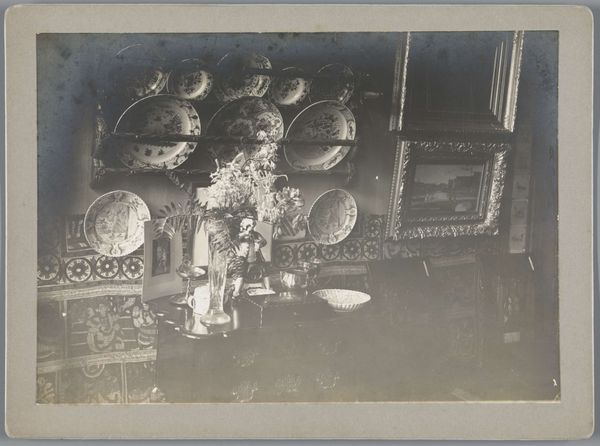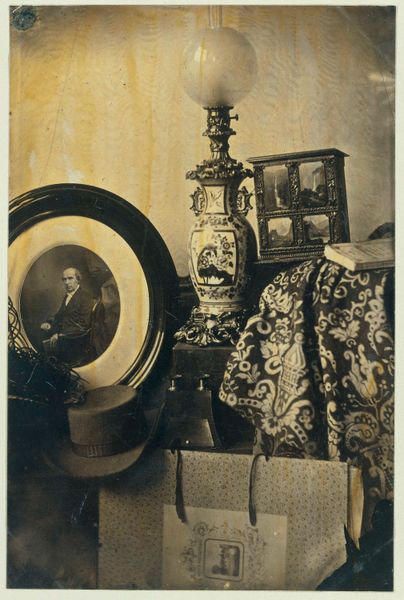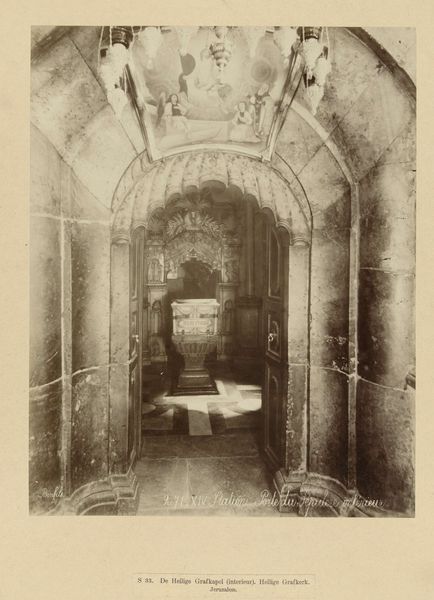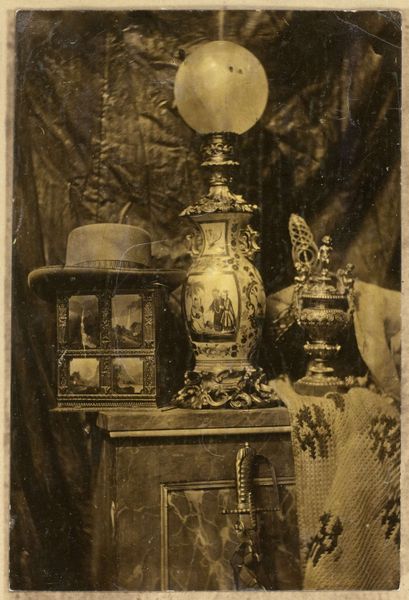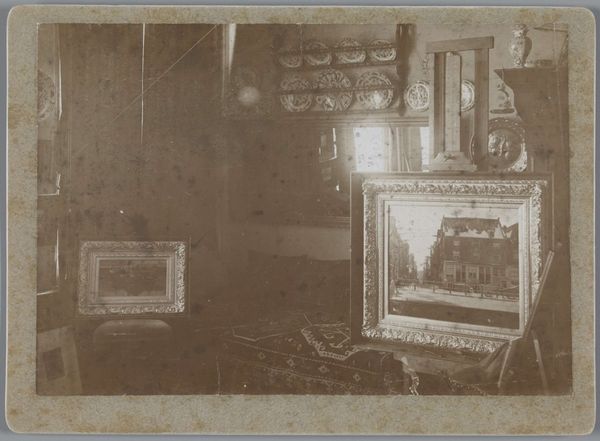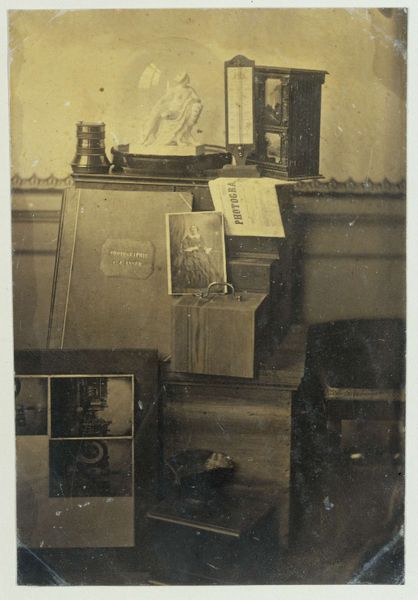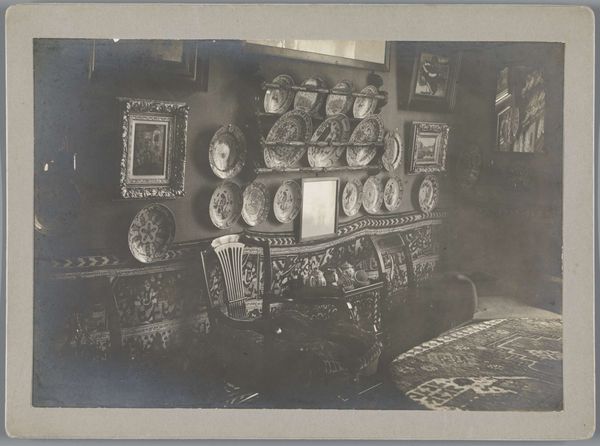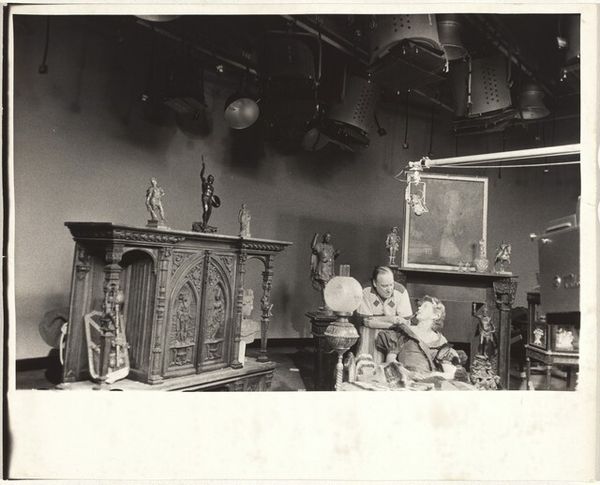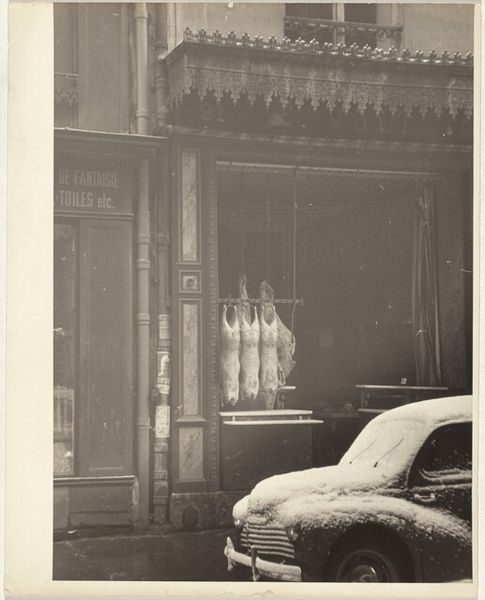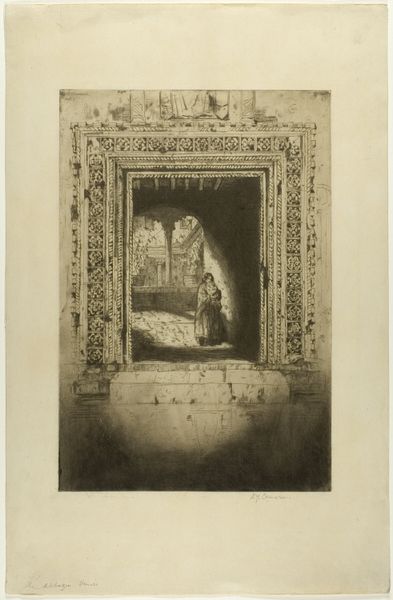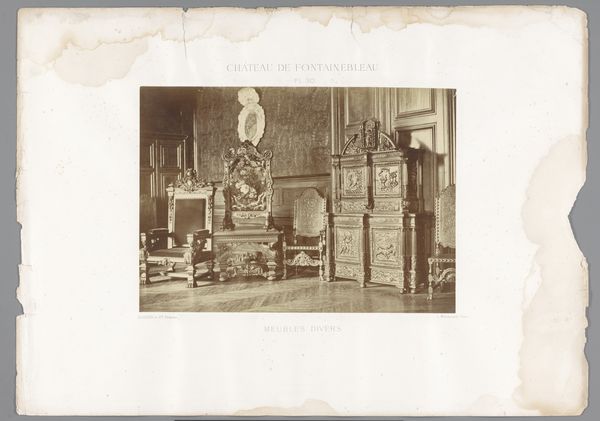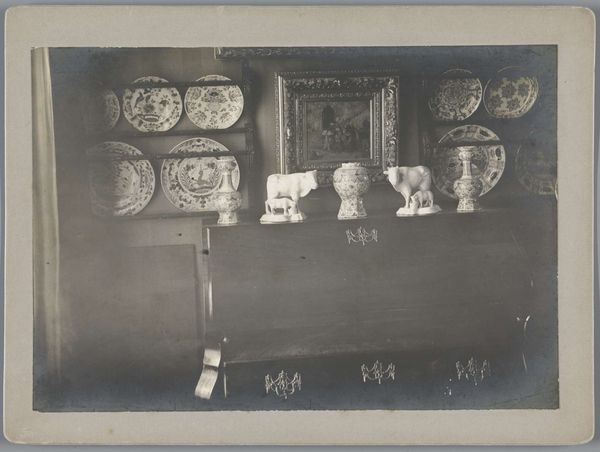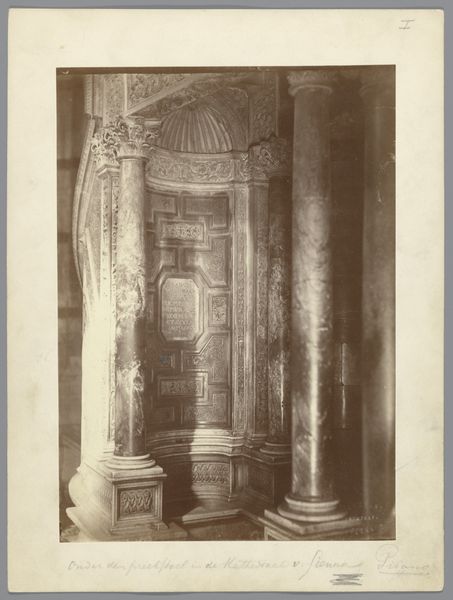
photography, gelatin-silver-print
#
landscape
#
photography
#
orientalism
#
gelatin-silver-print
#
19th century
Dimensions: height 222 mm, width 282 mm
Copyright: Rijks Museum: Open Domain
Curator: Editor: This is a fascinating gelatin-silver print by Maison Bonfils, titled "Kribbe in de Geboortegrot te Bethlehem," dating roughly from 1867 to 1895. It captures a scene within the Grotto of the Nativity. There’s a strong sense of enclosure and a layering of textures that draws the eye. What strikes you most about it? Editor: I think the juxtaposition of what appear to be really simple materials and elaborate decoration. I mean, you've got this almost crude manger-like structure right in front of what seems to be fairly luxurious patterned wallpaper and a fresco. How would you interpret the presence and arrangement of these diverse materials? Curator: Consider the circumstances surrounding its creation and distribution. Gelatin-silver prints allowed for mass production. Does this image commodify sacred space, turning a religious site into a marketable item for a Western audience eager for "orientalist" views? Look at the way the light is captured; it directs our gaze to the central display. Could this be understood as an industrial process shaping a religious experience for mass consumption? What kind of labor went into its construction, reproduction, and sale? Editor: That makes me consider how the artist’s choice of medium impacts how we view what’s depicted. It wasn’t hand-painted; it’s a reproducible image, making the scene much more accessible but possibly less spiritually impactful to viewers who purchased the print. Is it undermining the holiness or is it amplifying its message, maybe to more people than before? Curator: Precisely. The materials—the photographic chemicals, the paper, the ink—and the reproductive processes themselves are doing a kind of work here, framing and perhaps altering our perception of the holy site and faith itself. Also think of its effect and intended demographic: Is this also part of larger project of Westerners defining and depicting the “Orient” for a particular kind of consumption and understanding? Editor: This focus on materials and mass distribution provides such a concrete and understandable approach to this work! It definitely offers a new perspective, thinking about it in terms of production and accessibility instead of just considering the sacredness of what it is. Curator: And by extension, it forces us to question the value systems embedded in art history and its making, versus other industries or processes that facilitate seeing and remembering.
Comments
No comments
Be the first to comment and join the conversation on the ultimate creative platform.
